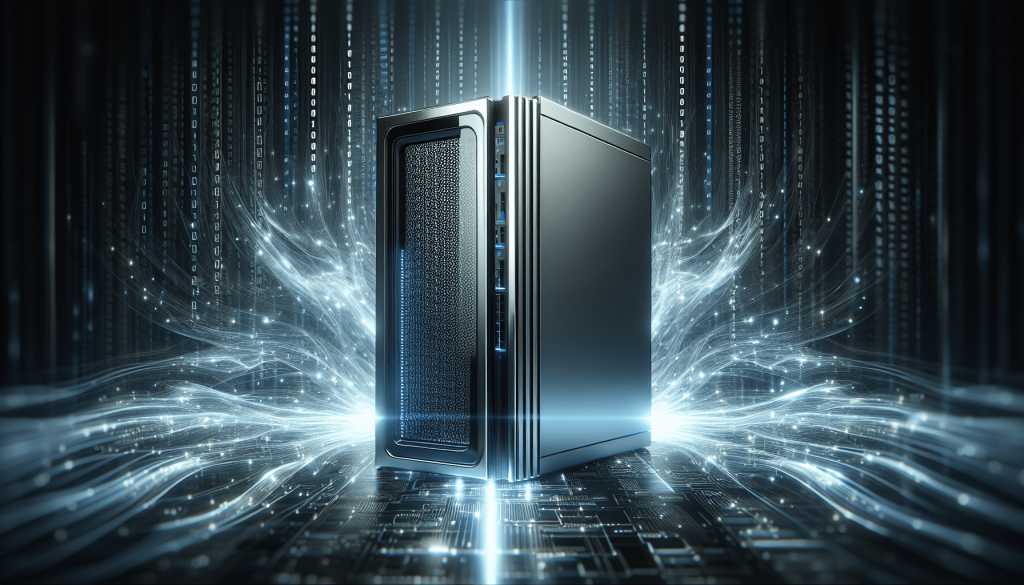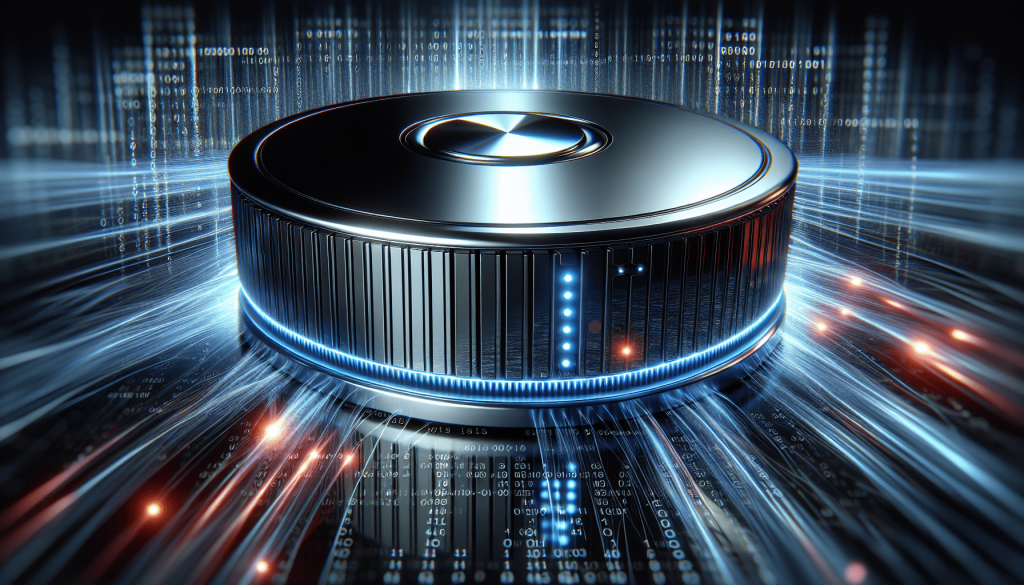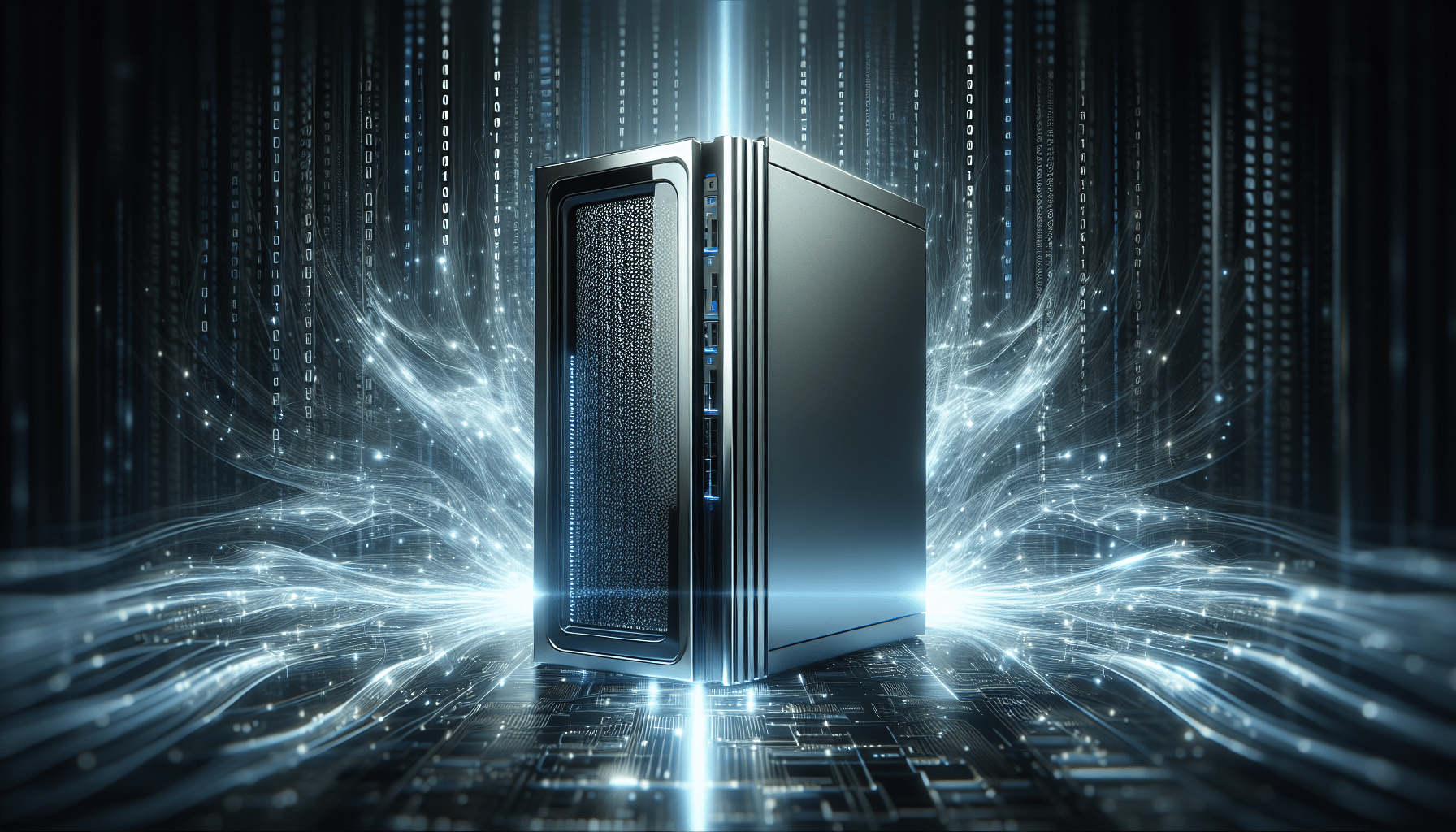In this exciting article, we will take a look at the incredible advancements in hardware firewall technology that are set to shape the future of online security. From increased speed and efficiency to enhanced protection against ever-evolving cyber threats, we are about to embark on a fascinating exploration of the latest developments in this crucial technology. So, sit back, relax, and prepare to be amazed by the future of hardware firewall technology!

Introduction to Hardware Firewall Technology
Definition of hardware firewall
A hardware firewall is a network security device that helps protect computer networks from unauthorized access and malicious activity. Unlike software firewalls that run on individual computers or servers, hardware firewalls are standalone devices that sit between the network and the internet. They monitor and filter network traffic, based on predetermined security rules, to prevent unwanted elements from gaining access to the network.
Importance of hardware firewall in network security
With the increasing reliance on technology and the growing number of cyber threats, network security has become a critical concern for businesses and individuals alike. A hardware firewall plays a crucial role in ensuring the security and integrity of a network. It acts as the first line of defense by inspecting incoming and outgoing traffic and blocking any suspicious or malicious activity. By providing network-wide protection, a hardware firewall helps safeguard sensitive information, prevent data breaches, and maintain the overall security of an organization’s digital infrastructure.
Current State of Hardware Firewall Technology
Overview of existing hardware firewall solutions
The hardware firewall market offers a wide range of solutions catering to different network sizes and security requirements. From small office/home office (SOHO) firewalls to enterprise-grade appliances, there are numerous options available for businesses of all sizes. These solutions come with a variety of features, including VPN support, intrusion prevention systems, content filtering, and more. Some popular hardware firewall brands include Cisco, Fortinet, Palo Alto Networks, and Juniper Networks.
Strengths and limitations of current hardware firewall technology
One of the significant strengths of hardware firewall technology is its ability to provide robust network security. Unlike software firewalls, hardware firewalls operate at the network level, allowing them to handle higher volumes of traffic and provide more efficient protection. Hardware firewalls also offer better performance and are less prone to vulnerabilities compared to their software counterparts.
However, there are some limitations to consider. Hardware firewalls can be expensive, especially for larger networks and organizations. Additionally, they require regular maintenance and updates to keep up with evolving threats and security standards. Another challenge is that hardware firewalls are still dependent on human configuration and management, which can be time-consuming and prone to human error.
Emerging Trends in Hardware Firewall Technology
Increased focus on threat intelligence
As cyber threats continue to evolve, hardware firewall technology is adapting to keep pace. One emerging trend is the increased focus on threat intelligence. Hardware firewalls are incorporating advanced threat detection mechanisms, such as intrusion prevention systems, deep packet inspection, and anomaly detection, to identify and block sophisticated attacks. By leveraging threat intelligence feeds and real-time data, hardware firewalls can provide better protection against emerging threats.
Integration with cloud-based security platforms
The rise of cloud computing has reshaped the way networks are secured. To align with this trend, hardware firewall technology is integrating with cloud-based security platforms. This integration allows hardware firewalls to leverage the scalability, flexibility, and centralized management capabilities of the cloud. By offloading certain security functions to the cloud, hardware firewalls can optimize performance, effectively handle increased network traffic, and streamline security management processes.
Improved scalability and performance
Scalability and performance have always been critical factors in firewall technology. Hardware firewalls are undergoing constant advancements to address these concerns. The latest hardware firewall solutions are built to handle the growing demands of modern networks by incorporating high-performance processors, increased memory, and optimized traffic handling capabilities. These improvements ensure that hardware firewalls can effectively handle ever-increasing network speeds while maintaining optimal security levels.
Innovations in Hardware Firewall Architecture
Next-generation firewall capabilities
Next-generation firewalls (NGFWs) are a significant innovation in hardware firewall technology. NGFWs combine traditional firewall functionality with advanced capabilities, such as application-layer inspection, user identification, and content filtering. This enables them to provide granular control and visibility into network traffic, helping identify and mitigate potential threats more effectively. NGFWs are designed to adapt to emerging threats and support dynamic security policies, making them an essential component of modern network security infrastructure.
Software-defined networking and firewall virtualization
Software-defined networking (SDN) and firewall virtualization are revolutionizing the way hardware firewalls are implemented and managed. SDN enables the centralization and programmability of network control, allowing administrators to define security policies and manage firewall rules more efficiently. Firewall virtualization takes advantage of SDN by separating the firewall functionality from physical hardware, allowing multiple virtual firewall instances to run on a single device. This approach offers increased flexibility, scalability, and cost savings, as it eliminates the need for dedicated hardware for each firewall instance.

Enhancing Security Capabilities
Deep packet inspection and application-aware filtering
Deep packet inspection (DPI) is a technique used by hardware firewalls to examine the contents of network packets at a granular level. By analyzing packet payloads and headers, DPI can detect and block malicious code, viruses, and other threats that may be hidden within legitimate network traffic. Additionally, hardware firewalls can implement application-aware filtering, which allows them to identify and control specific applications or protocols traversing the network. This level of inspection further enhances security by preventing the unauthorized use of applications and reducing the attack surface.
Behavioural analytics for threat detection
Behavioural analytics is an emerging approach to threat detection that focuses on identifying abnormal patterns of behavior within a network. By analyzing network traffic and user behavior, hardware firewalls can establish a baseline of normal activity and detect any deviations indicative of malicious activity. Behavioural analytics can identify zero-day attacks, advanced persistent threats, and insider threats that may bypass traditional signature-based detection methods. By leveraging machine learning algorithms, hardware firewalls can continuously learn from network behavior patterns and adapt their security measures accordingly.
Machine learning and AI-powered firewall technology
Machine learning and artificial intelligence (AI) are poised to revolutionize the field of network security, including hardware firewall technology. By training algorithms on large datasets of known threats, machine learning enables hardware firewalls to automatically identify and block malicious activity in real-time. AI-powered firewall technology goes a step further by enabling firewalls to learn from experience and make intelligent decisions based on contextual information. This allows hardware firewalls to adapt to new threats and changing network conditions, providing more effective and proactive security measures.
Addressing the Challenges of IoT Devices
Rising concerns over IoT device vulnerabilities
The proliferation of Internet of Things (IoT) devices presents a unique security challenge. These devices often have limited security features, making them attractive targets for attackers. The interconnected nature of IoT devices also means that a compromise in one device can potentially lead to a breach of the entire network. Hardware firewalls play a crucial role in securing IoT devices by controlling and monitoring the traffic flow between these devices and the wider network.
Securing IoT network traffic with hardware firewalls
Hardware firewalls can help address the security risks associated with IoT devices by implementing strict policies and access controls. By segmenting the IoT network from the rest of the infrastructure, hardware firewalls can prevent unauthorized access and limit the potential impact of a compromised device. Additionally, hardware firewalls can leverage deep packet inspection and behavioural analytics to detect and block malicious traffic originating from IoT devices. These capabilities ensure that IoT devices are effectively protected without compromising the overall network security.
The Impact of 5G on Hardware Firewall Technology
Introduction to 5G networks and their security implications
As 5G networks become more widespread, they bring about significant changes and challenges for network security. With higher speeds, increased connectivity, and larger bandwidth, 5G networks open up new attack vectors and increase the potential for security breaches. Hardware firewall technology needs to adapt to these changes to ensure the security and privacy of data transmitted over 5G networks.
Adapting hardware firewall technology for 5G environments
To address the security implications of 5G networks, hardware firewalls need to be capable of handling the increased network traffic, higher throughput, and lower latency associated with these networks. Hardware firewalls must be integrated into the 5G infrastructure, enabling them to inspect and filter traffic at ultra-high speeds without impacting connectivity or performance. Additionally, hardware firewalls must incorporate advanced capabilities, such as network slicing, to secure individual 5G network segments effectively.
Collaboration with Software-Based Security Solutions
Integration of hardware and software firewalls for comprehensive protection
To achieve comprehensive network security, hardware and software firewalls can work together in a collaborative manner. While hardware firewalls provide network-wide protection and defense against external threats, software firewalls can be installed on individual devices to provide additional protection against internal threats, such as malware or unauthorized access. The collaboration of these two approaches creates multiple layers of defense, ensuring that both network-level and device-level security are adequately addressed.
Benefits and challenges of combining different security approaches
The combination of hardware and software firewalls brings several benefits. It enhances the overall security posture, as it covers both external and internal threats. By leveraging hardware firewalls for network-level security and software firewalls for device-level security, organizations can achieve a more robust defense against a wide range of threats. However, this approach also introduces challenges, such as coordination between different security tools, potential conflicts in security policies, and the need for regular updates and maintenance of both hardware and software firewalls.
Regulatory Compliance and Hardware Firewall Technology
Role of hardware firewalls in meeting regulatory requirements
Numerous regulations and industry standards require organizations to implement adequate network security measures to protect sensitive data. Hardware firewalls play a critical role in meeting these regulatory requirements. Their ability to monitor and control network traffic, implement access controls, and identify and block malicious activity aligns with the security requirements set forth by regulations such as the General Data Protection Regulation (GDPR), the Payment Card Industry Data Security Standard (PCI DSS), and the Health Insurance Portability and Accountability Act (HIPAA).
Best practices for implementing compliant hardware firewall solutions
Implementing compliant hardware firewall solutions requires careful planning and consideration. Organizations must assess their specific regulatory requirements and select hardware firewalls that meet those requirements. It is crucial to regularly update hardware firewalls with the latest firmware and security patches to address any known vulnerabilities. Additionally, organizations should implement a layered approach to security by combining their hardware firewalls with other security technologies, such as intrusion detection/prevention systems and security information and event management (SIEM) solutions.
Conclusion
In conclusion, hardware firewall technology continues to evolve to meet the growing demands of network security. From its role as the first line of defense to the integration of advanced threat intelligence and cloud-based security platforms, hardware firewalls play a crucial role in protecting networks from a wide range of cyber threats. The advancements in hardware firewall architecture, such as next-generation firewall capabilities and software-defined networking, enable more efficient and scalable security solutions. Enhancements in security capabilities, such as deep packet inspection and machine learning, enhance the ability of hardware firewalls to detect and mitigate emerging threats. The challenges posed by IoT devices and the advent of 5G networks highlight the need for hardware firewalls to adapt and evolve. Collaboration with software-based security solutions and compliance with regulatory requirements further enhance the effectiveness of hardware firewall technology. As technology continues to advance, hardware firewalls will continue to be at the forefront of network security, providing reliable protection in an ever-evolving threat landscape.
